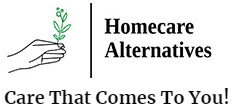For seniors aging in place, the risk of falling is a significant concern that can potentially compromise their safety and independence. As we age, various factors such as decreased muscle strength, balance issues, vision problems, medication side effects, and chronic health conditions contribute to an increased risk of falls. Understanding these risks is the first step in developing a comprehensive fall prevention strategy for our elderly loved ones.
Creating a safer living space is essential in fall prevention, and there are numerous ways to modify a home to reduce risks. Improving lighting is a crucial first step. This can be achieved by installing bright, easily accessible light switches at room entrances, using night lights in hallways, bathrooms, and bedrooms, and ensuring stairways are well-lit. These simple changes can significantly improve visibility and reduce the likelihood of trips and falls.
Removing tripping hazards is another vital aspect of home safety. This involves clearing clutter from walkways, securing or removing loose rugs, and organizing electrical cords along wall edges. In the bathroom, a high-risk area for falls, installing grab bars near toilets and in showers, using non-slip mats in bathtubs and shower areas, and considering a walk-in shower or bath for easier access can make a world of difference.
Enhancing accessibility throughout the home is equally important. This can be done by rearranging furniture to create clear pathways, keeping frequently used items within easy reach, and installing handrails on both sides of staircases. These modifications not only reduce fall risks but also make daily activities easier and more comfortable for seniors.
Beyond home modifications, certain lifestyle adjustments can significantly reduce fall risks. Regular exercise is paramount in maintaining strength, balance, and flexibility. Activities such as Tai Chi, yoga, and gentle strength training are excellent options for seniors. It’s also crucial to ensure that seniors have regular vision and hearing checks, as sensory impairments can greatly increase the risk of falls.
A regular review of medications with healthcare providers is essential, as some medications may cause dizziness or affect balance. Proper footwear is often overlooked but plays a vital role in fall prevention. Encouraging the use of well-fitting, low-heeled shoes with non-slip soles can provide better stability and traction. If recommended by a healthcare professional, the proper use of assistive devices such as canes or walkers can provide additional support and confidence in mobility.
Professional in-home caregivers, like those at Homecare Alternatives, play a crucial role in fall prevention. They provide invaluable assistance with daily activities, continuously monitor for potential hazards in the home, encourage and assist with prescribed exercises, provide reminders for medication and hydration, and offer support during transfers and mobility. Their presence and support can significantly reduce fall risks and provide peace of mind for both seniors and their families.
It’s important to be vigilant and proactive when it comes to fall prevention. If a senior experiences frequent near-falls or expresses fear of falling, it’s crucial to consult with healthcare providers. These professionals can assess fall risks, recommend appropriate interventions, and determine if additional support is needed.
Fall prevention is a multifaceted approach that combines home modifications, lifestyle adjustments, and professional support. By implementing these strategies, we can significantly reduce fall risks and help seniors maintain their independence and quality of life while aging in place. Every senior’s needs are unique, and personalized fall prevention strategies are key to ensuring safety and comfort.
For those seeking additional support or personalized fall prevention strategies, reaching out to professional services like Homecare Alternatives can provide tailored solutions and peace of mind. With the right precautions and support in place, seniors can enjoy a safer, more comfortable life in the familiarity of their own homes. Remember, when it comes to fall prevention, proactive measures and professional guidance can make all the difference in ensuring the wellbeing of our elderly loved ones.


 RSS - Posts
RSS - Posts